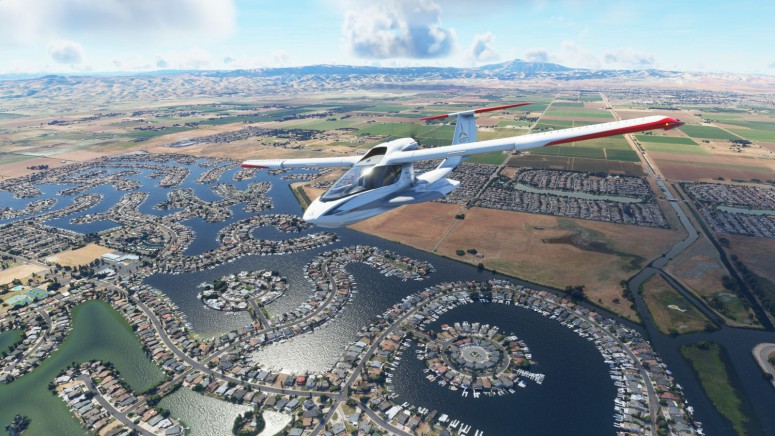
The Next-Gen Microsoft Flight Simulator Is Off to a Rough Take Off
- MS Flight Simulator is here, but it feels more like an arcade flier than a fully-fledged simulator.
- The scenery and the visuals are stunning, indeed, but not in every part of the world.
- Performance is generally bad, and the cost is pretty high for the state of the project.
One of the most highly anticipated game titles in 2020, the Microsoft Flight Simulator, has been officially released, and fans of the historic series are already zooming at the virtual skies. There are many things to like in this new version, as it features jaw-dropping visuals, an amazing global terrain, detailed aircraft models with faithfully recreated cockpits, exciting training missions, a new realistic weather system, and even mesmerizing sunsets.
However, as soon as the first buyers of the simulator look past that veneer, they notice that what they got is clearly an unfinished product. First of all, the flight and physics are leaning heavily towards the arcade end of the spectrum, leaving pure flight simulation fans, professional pilots, and experienced virtual fliers alienated.
Secondly, the ATC system appears to be the same as it was 15 years ago on the old version. The instructions it gives to virtual pilots are contradictory to the situation, and it feels like it was just shoved in.
Taxiing is weird, random stuff happens on the airports, some runways are dipped in mud, aircraft checklists are missing, there are no flight manuals, flight plans don’t register anywhere (especially on the ATC), and there is no electrical or oil management in the engine management. Additionally, the weather system is working somewhat randomly and definitely far from comparable to truly realistic implementations like the one in FlightGear, for example.
So, if the new Microsoft Flight Simulator isn’t an awesome one, you can at least just fly around and enjoy the amazing scenery, right? Well, it depends. Most landmarks are there, lakes and rivers look great, road traffic is captivating, textures are detailed, and transitions are generally smooth.
However, there are numerous glitches in various locations. People flying in Canada and Norway, for example, report all sorts of weird stuff like the one shown in the following video.
The Verge has collected the oddest ones posted by people on Twitter, and some quirks are really funny. Microsoft used satellite data, Bing Maps, and AI to generate detailed scenery for the entire planet, so, understandably, not everything can be perfect.
Essentially, the first users are serving as beta testers, and Microsoft engineers are correcting the reported inaccuracies.
https://twitter.com/617via904/status/1295861849108418567
And then we come to the question of how much all this flying in this virtual world and enjoying sceneries and sunsets would cost you. That would be $59.99 for the “Standard” version, $89.99 for “Deluxe,” and “Premium” would be $119.99.
The difference between these versions is the number of airports and aircraft models available to the player, so for the full version, the cost is to the skies. Even if you pay for the Premium, you will still have to pay an additional $8 for London city landmarks. How does that sound for an unfinished product?
Finally, there’s the sim performance that gives another indication of a rushed release. People using Nvidia’s 2070 (far greater than the recommended) are reporting an FPS number as low as 30 on populated areas. This is a lack of optimization right there - and again, Microsoft will have to do a lot of work on that part in the following months.
Should you buy it? Absolutely yes, but not yet. Return to user reviews after a couple of months and see if the situation has gotten any better. For now, the new Flight Simulator looks very promising, but it will need much time to unfold its full potential.
Read More:
- Fortnite Removed From the Play and App Stores for Rules Violation
- Best Curved Monitors for Gaming, Productivity, and Multimedia in 2020
- All Chinese Gamers Will Have to Verify Their Real Names by September






